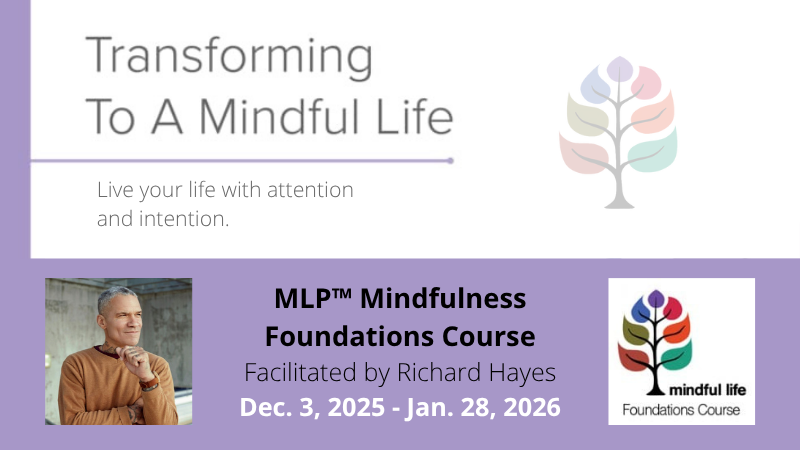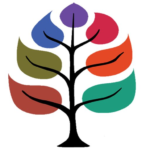
Fridays, February 20 – April 10, 2026.
In this time of national and global challenges including deep societal divides and grief-inducing climate chaos, basic mindfulness skills can help us to reduce anxiety, eco-despair, and fear; to live our precious lives with genuine happiness, loving-kindness, and compassion. This course is a transformative first step on a lifelong journey into our more authentic and joyful selves.
The MLP Mindfulness Foundations Course combines the practice of meditation with the application of mindfulness in daily life. Our goal is to help you to live your life with attention and intention, cultivating the skills that empower you to make healthy choices that are in alignment with your values and that are meaningful to you. The course is designed to be practical and accessible, allowing anyone, with or without a background in mindfulness, to participate. The course is also designed to be universal so that anyone can benefit from mindfulness, regardless of cultural, economic, or spiritual background.
Join the Mindful Life Program Foundations Course February 20 – April 10, 2026. Give yourself the gift of this lively and engaging opportunity to learn to live mindfully, with attention and intention, cultivating genuine happiness and a meaningful life. The MLP Foundations Course combines the practice of meditation with the application of mindfulness in daily life and guides you to develop the habits that support you. Empower yourself to integrate the four key areas of mindfulness – attention, wisdom, values, and an open heart – into your life in practical, accessible, and universal ways.
Attention – Developing attention through meditation training.
Wisdom – Understanding one’s biases, labeling, projections and pre-judgments. Increasing emotional intelligence and learning to respond rather than react.
Values – Living a meaningful life. Developing healthy habits and responses that are in alignment with one’s personal values.
Open heart – Developing healthy relationships and connections. Cultivating skills of compassion, loving-kindness, empathic joy, and equanimity.
In order to live a meaningful life and develop the freedom to live consciously, the curriculum focuses on training the mind and cultivating the ability to make healthy choices that are beneficial to the life you want to live. In this way, you can live your life with attention and intention. This course consists of lectures, meditations, small group discussions, journaling, and short video presentations. Our teachers create a safe environment for participants to explore their own values and learn to apply practices to live in alignment with them.
Enrollment includes:
- 20 hours of engaging live online class
- “Transforming to a Mindful Life” Course Companion Journal
- “The Wisdom of a Meaningful Life” by co-founder John Bruna
- Three-month membership in the Mindful Life Community™
- Access to a guided meditation library and additional resources
Dates: Fridays, February 20 – April 10, 2:30 – 5 pm Mountain Time
Cost: $349, scholarships available based on need. Contact the instructor for information on cost and scholarships. $50 off for members of MLC or MIR communities.
To register: click here.
Contact: Rita Clagett, Mirador Eco-Retreat, 970.216.8020
Facilitator: Rita Clagett
Facilitator Website
*Continuing Professional Development (CPDs) credits may be available for social workers, therapists, and substance abuse counselors.
*Continuing Education Units (CEUs) may be available for teachers.
Please contact the instructor to inquire about credits being offered for this course.
The course is offered to general audiences as well as to specific audiences such as educators, mental health professionals, recovery professionals, wellness programs, and more. Ask about bringing this course to your workplace or other groups.





